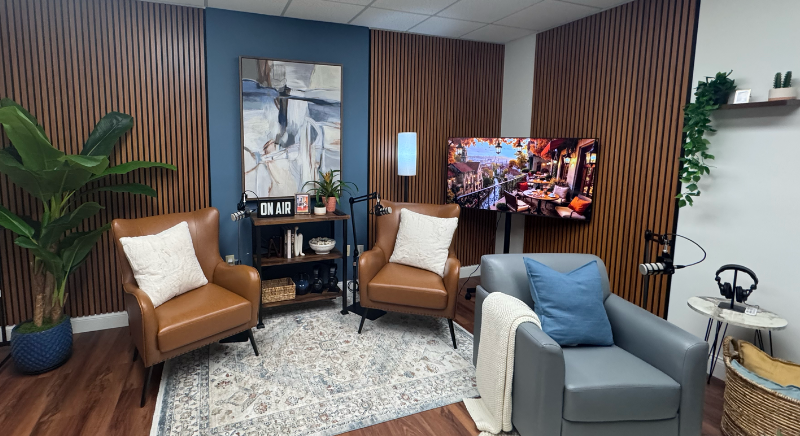
Do You Have WFHBS (Work-From-Home Burnout Syndrome)?
Burnout in the workplace has been around well before Covid-19. Still, workplace burnout has gained an increase in attention and incidence as the global workforce embarks on a pandemic-inspired remote work experiment. Work-from-home burnout has been brought to the surface as a real challenge for remote workers, not just one reserved for those who commute to the corporate offices on the daily.
Work-from-home burnout challenges are especially prevalent for:
- Workers who had no prior experience in a work-from-home environment,
- Parents who are not used to the work from home with the kids at home environment,
- Workers who have limited technology resources provided to them by their companies,
- Workers who have inherently stressful jobs with heavy workloads,
- Workers who have experienced (financial stress such as reduced pay or looming layoffs) in addition to adjusting to the work-from-home environment.
In the past, the work-from-home concept might have been romanticized to include beach umbrellas above the laptop or backpackers with nothing but freedom and a little work to do. But any remote worker who has been at it for a while will confirm, it’s not all lattes on the beach and road trips by the mountains. It takes focus, self-motivation, and technology (among other things) to get it right. And, if you don’t avoid a few missteps, work-from-home burnout can become a real problem – especially if going back to the office is not an option due to COVID-19.
Avoid These 4 Common Work-From-Home Pitfalls
Set strong boundaries. Boundary-setting is an exercise that must be mastered by all workers, whether classified as work-from-home or in office. The rub for work-from-home employees is boundary-mastery often applies to, not only, co-workers and bosses but also family members. Here are some tips to getting your boundaries in place while you work-from-home:
- Don’t check (or if you must check, don’t make a habit of replying) to emails after hours. Emergencies happen. Rush projects do come up. Of course, that’s par for the course in today’s busy work environment, but try to avoid making it the norm.
- Set blocks of do not disturb time for the kids. Assuming your children can be unsupervised for periods of time playing video games, doing artwork or reading, etc., let them know to give you some space for a couple of hours each day. If you have very young children that require more attention, coordinate with their independent playtime in a playpen and nap time.
- Create a clear expectation and understanding with your spouse. Sometimes the work-from-home employee is considered not working by their better half. Maybe said-spouse often calls for a quick check-in or asks the work-from-home counterpart to run errands during the workday, sound familiar? Be sure to set the boundaries that during working hours, you don’t have time to take on any more than you usually would if working away from home.
- Repeat this mantra, “Work from home does not mean work from home all the time.” A common work-from-home mistake that leads to burnout is working from morning to night without a break, ignoring lunch breaks, and never taking a day off.
In many ways, this work/life balance is harder to achieve for the work-from-home employee because of the lack of physical boundaries between home and work.
Use a project management tool. Many, many free PM tools exist that can be used solo or as part of a team. Asana, Teamwork, and Jira are all popular task management tools that can take the place of the stand-up meeting, the on-the-fly priority syncs, and goal setting chats that often take place organically in the brick and mortar workplace. These tools can also serve as a way to manage your employees if you have direct reports, improve efficiencies with other teams during the workflow process, and keep a record of productivity.
Connect with your team (even if it’s virtual). We’ve all jumped into the Zoom and Google Meet meeting world post-pandemic. These tools are fantastic to get some business done, as we know. But, they can also take the place of the interaction that we would typically have in the office. Quick questions and fun back and forths can happen over Slack, and weekly collaboration or catch up sessions can be baked into the calendar to keep the team feeling connected and provide chances for open communication.
Curate a pleasant working environment. Many work-from-home employees make this common mistake. They start working propped on their bed or the couch or even at the kitchen table. They have no dedicated office space, no door to close when a meeting or deep concentration is needed, and a lack of organization that leads to stress. A good working environment is a foundation from which everything you do stems, but sometimes it just does not exist in your current home office. (This is especially true with the existing landscape where both spouses plus kids can be home due to COVID-19.)
If your home office situation is not working due to circumstance, space needs, or professional requirements, you have options. Crown Center Executive Suites, centrally located in Fort Lauderdale, offers you a safe place to work away from your home and avoid the potential for burnout. And, as an added benefit, you just might take your business to the next level at the same time.
Your Crown Center office can be configured to suit your needs with options that include virtual offices, day offices, shared workspace, dedicated desks, and professionally-equipped meeting rooms and a state of the art training center. All this with safety protocols in place, 24/7 access, professional customer service, free parking, and affordable pricing.









